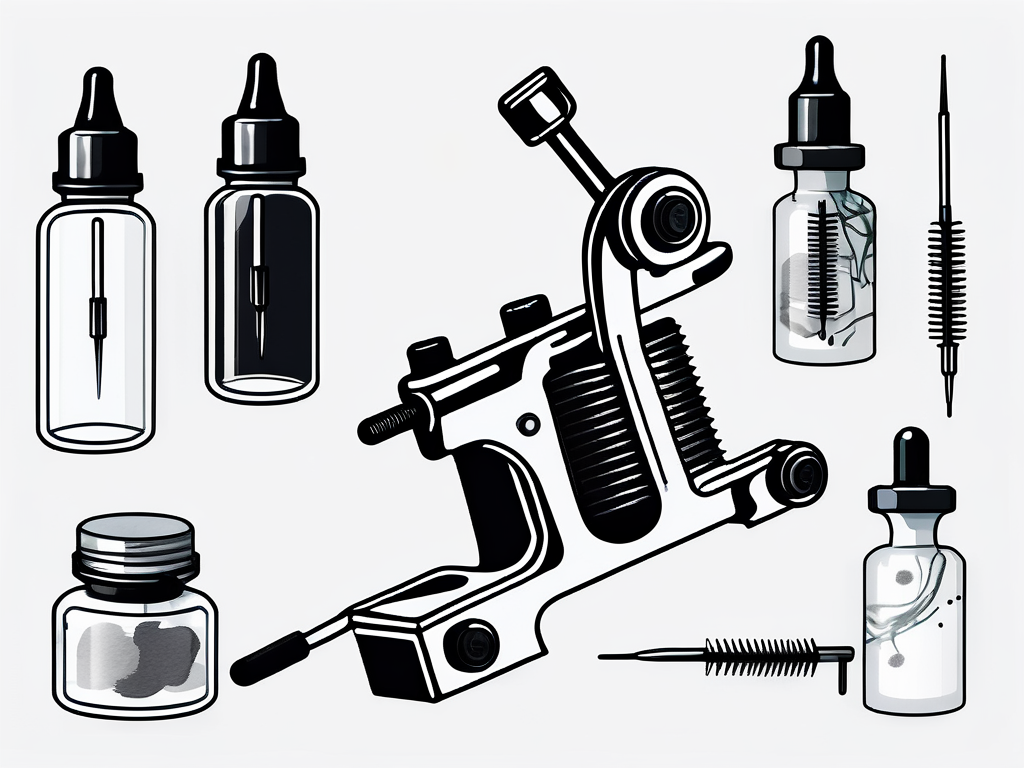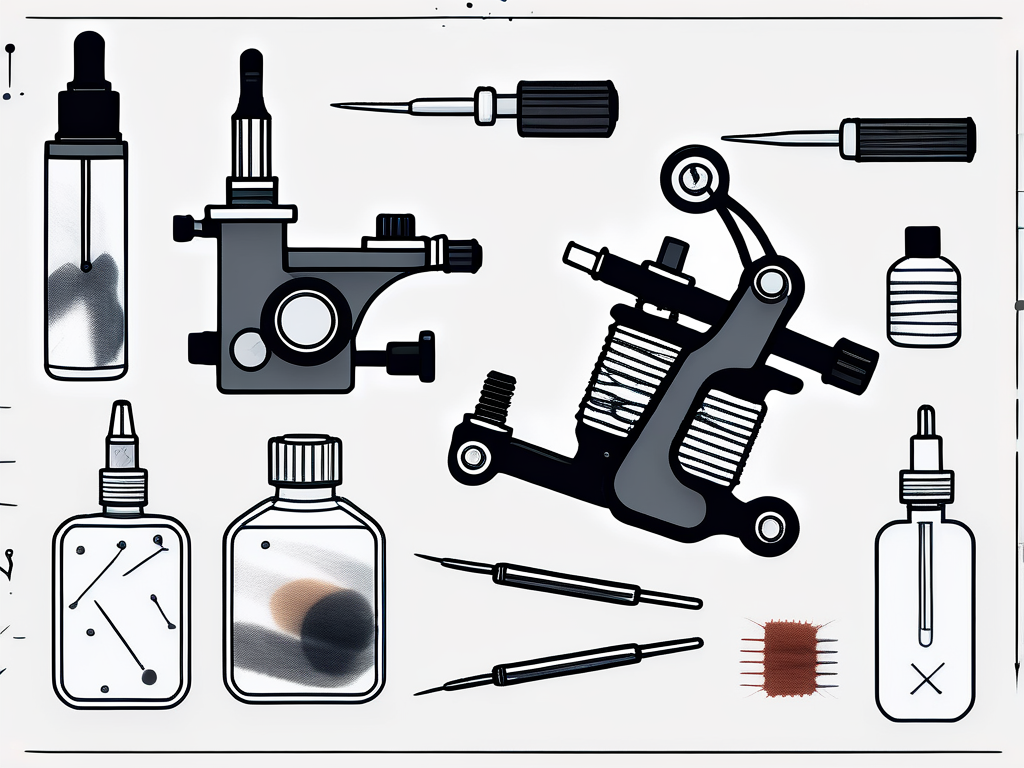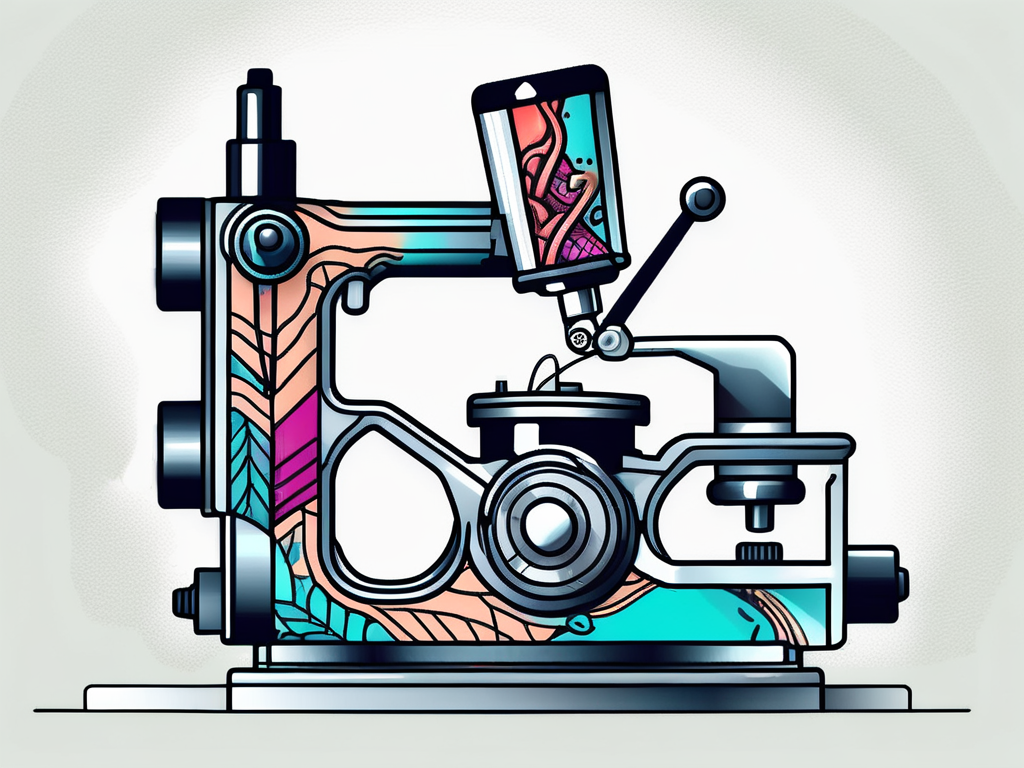How to Tattoo If You Have Never Tattooed Before

How to Tattoo If You Have Never Tattooed Before
Tattooing is a form of body art that has been practiced for centuries. If you've never tattooed before, it's essential to understand the basics before diving into the tattooing world. This article will guide you through the process, from understanding the history and art of tattooing to improving your tattoo skills. So let's get started!
Understanding the Basics of Tattooing
Tattooing is not just about drawing on the skin; it's about creating a piece of art that lasts a lifetime. To appreciate the art form fully, it's crucial to understand its history and significance.

Delving deeper into the world of tattooing reveals a rich tapestry of cultural traditions and artistic expressions. From the intricate hand-tapped tattoos of Polynesian cultures to the bold and vibrant designs of American traditional tattoos, each style carries its own unique history and symbolism. Tattoo artists often draw inspiration from these diverse traditions to create contemporary works of art that pay homage to the past while pushing boundaries.
The History and Art of Tattooing
The history of tattooing dates back thousands of years, with evidence found in ancient civilizations such as Egypt, Greece, and China. Tattoos were used for various purposes, including cultural rituals, identification, and beautification. Today, tattoos have become a popular form of self-expression and art.
Exploring the art of tattooing further unveils a world of symbolism and meaning. Different symbols and imagery carry various connotations across cultures and time periods. For example, a rose tattoo can symbolize love and beauty in Western culture, while in Japanese culture, a koi fish tattoo represents perseverance and strength. Understanding these symbols adds layers of depth and significance to the tattooing process.
Essential Tattoo Equipment and Their Uses
Before you start tattooing, you need to familiarize yourself with the essential tattoo equipment and their uses. These include tattoo machines (also known as tattoo guns), needles, ink, and other accessories. Each tool serves a specific purpose and must be handled with care.
Mastering the use of tattoo equipment requires precision and skill. Tattoo machines, for example, come in various types, such as rotary and coil machines, each offering different benefits and techniques. Choosing the right needles and ink colors is crucial for achieving the desired effect, whether it's fine line work or bold shading. Tattoo artists often develop their preferences for equipment based on their style and artistic vision.
Health and Safety Guidelines for Tattooing
Your health and safety should be a top priority when tattooing. Proper sanitization, sterilization, and hygiene practices are essential to prevent infections and ensure a safe tattooing experience. Familiarize yourself with industry regulations and guidelines, such as using disposable needles and wearing gloves.
Creating a safe and hygienic tattooing environment is not only a legal requirement but also a moral obligation to your clients. Educating yourself on bloodborne pathogens and cross-contamination prevention is crucial for maintaining a professional standard of care. By prioritizing health and safety practices, you not only protect yourself and your clients but also uphold the integrity of the tattooing industry.
Preparing for Your First Tattoo Session
Now that you have a good understanding of tattooing, it's time to prepare for your first tattoo session. Taking the necessary steps beforehand will help ensure a smooth and pleasant experience.

Embarking on the journey of getting a tattoo is an exciting and personal decision. It's a form of self-expression that can hold deep significance for many individuals. From commemorating a special memory to embracing cultural heritage, tattoos can symbolize a myriad of emotions and stories.
Choosing the Right Tattoo Design
A tattoo is a permanent mark on your body, so choosing the right design is crucial. Consider your interests, personal meaning, and aesthetic preferences when selecting a tattoo design. Consult with a professional tattoo artist who can provide guidance based on their expertise.
Take your time exploring various design options, from intricate patterns to minimalist symbols, to find a tattoo that resonates with you on a profound level. Your tattoo artist can also help you customize the design to suit your style and body placement preferences.
Understanding Skin Types and Tattoo Placement
Not all skin is the same, and understanding your skin type can affect the tattooing process. Some skin types may hold ink better than others, while certain areas of the body may be more sensitive or prone to fading. Discussing these factors with your tattoo artist will help determine the best placement for your chosen design.
Factors such as skin elasticity, hydration levels, and even sun exposure can influence how well a tattoo heals and retains its vibrancy over time. Your tattoo artist will consider these aspects when recommending the ideal placement for your tattoo to ensure both aesthetic appeal and longevity.
Setting Up Your Tattoo Workspace
Creating a clean and organized workspace is essential for a successful tattoo session. Ensure that your workstation is free from clutter and equipped with all the necessary tools and supplies. Maintaining a sterile environment will help minimize the risk of contamination and ensure a professional outcome.
Additionally, establishing a comfortable and relaxing ambiance in the tattoo studio can contribute to a positive experience. From soothing music to calming scents, creating a welcoming atmosphere can help ease any pre-tattoo jitters and enhance your overall comfort during the session.
The Tattooing Process Explained
Now that you've prepared for your first tattoo session, let's dive into the tattooing process itself. Understanding each step will help ease any anxieties and allow you to appreciate the artistry behind tattooing.

Before the tattooing process begins, it's essential to discuss your design with your tattoo artist thoroughly. They will work with you to ensure the design is exactly what you want, making any necessary adjustments to size, placement, or details. This collaborative effort is crucial in creating a tattoo that you will love for years to come.
Outlining the Tattoo Design
The first step in the tattooing process is outlining the design onto the skin. This involves using a tattoo machine and a needle to create precise lines that will serve as the foundation for the tattoo. Your tattoo artist will work carefully to ensure the design's proportion and accuracy.
During the outlining phase, it's normal to feel some discomfort as the needle penetrates the skin. However, many people find the sensation to be more manageable than expected, often describing it as a mix of scratching and vibrating. Remember to communicate with your tattoo artist if you need a break or feel any excessive pain.
Shading and Coloring Techniques
Once the outline is complete, your tattoo artist will move on to shading and coloring. This step brings depth and dimension to the tattoo, creating a visually stunning piece of art. Different techniques, such as dotwork, blending, and gradients, may be used to achieve the desired effect.
Shading and coloring require a steady hand and a keen eye for detail. The artist will use different needle configurations and ink densities to create shadows, highlights, and vibrant colors. This process is where the tattoo truly comes to life, transforming from a simple outline into a masterpiece on your skin.
Aftercare and Healing Process
After completing your tattoo, proper aftercare is crucial for the healing process. Your tattoo artist will provide you with detailed instructions on how to care for your new tattoo, including washing, applying ointment, and avoiding certain activities that may hinder the healing. Follow these guidelines diligently to ensure the best possible outcome.
Remember that the healing process can vary from person to person, depending on factors such as skin type, tattoo size, and placement. It's normal for the tattoo to scab, itch, and peel during the healing period. Avoid picking or scratching at the tattoo to prevent scarring and maintain the integrity of the design. With patience and proper care, your tattoo will heal beautifully, ready to be shown off to the world.
Improving Your Tattoo Skills
If you're interested in pursuing tattooing as more than just a hobby, there are steps you can take to improve your skills and become a professional tattoo artist.
Practicing on Synthetic Skin
Before tattooing on real skin, practicing on synthetic skin can help you refine your technique and develop a steady hand. Synthetic skin mimics the texture and feel of human skin, providing a realistic canvas for practice. Experiment with different tattooing styles, shading techniques, and needle configurations to enhance your skills.
Seeking Professional Training and Mentorship
To become a professional tattoo artist, seeking proper training and mentorship is invaluable. Look for reputable tattoo schools or apprenticeships where you can learn from experienced artists. Working under the guidance of a mentor will give you the opportunity to further develop your skills and gain real-world experience in a professional studio environment.
Keeping Up with Tattoo Trends and Styles
Tattooing is an ever-evolving art form, with new trends and styles emerging regularly. Stay updated on the latest techniques, designs, and industry news to keep your tattoo skills fresh and innovative. Attend tattoo conventions, follow influential artists on social media, and engage with the tattooing community to stay inspired and connected.
With the knowledge and guidance provided in this article, you can enter the world of tattooing with confidence. Remember, tattooing is a skill that requires practice, dedication, and continuous learning. By honing your craft and respecting the art form, you can create beautiful and meaningful tattoos that will leave a lasting impression on both yourself and others.

This article was brought to you by ZOOTATTOO® The world's premium vegan aftercare balms, creams, adhesive wraps, and cleansers. We only use high quality exotic Australian Organic Hemp Oil and complimentary botanical ingredients for when you're healing tattoos, scalp micro-pigmentation and laser treated skin.You won't look back!
FREE SHIPPING on orders over $100AUD to USA, Australia, Canada, New Zealand, UK, Belgium, Germany, France, Ireland, Switzerland and Netherlands ORDER HERE
** Not redeemable with other promotional discounts
0 Kommentare



